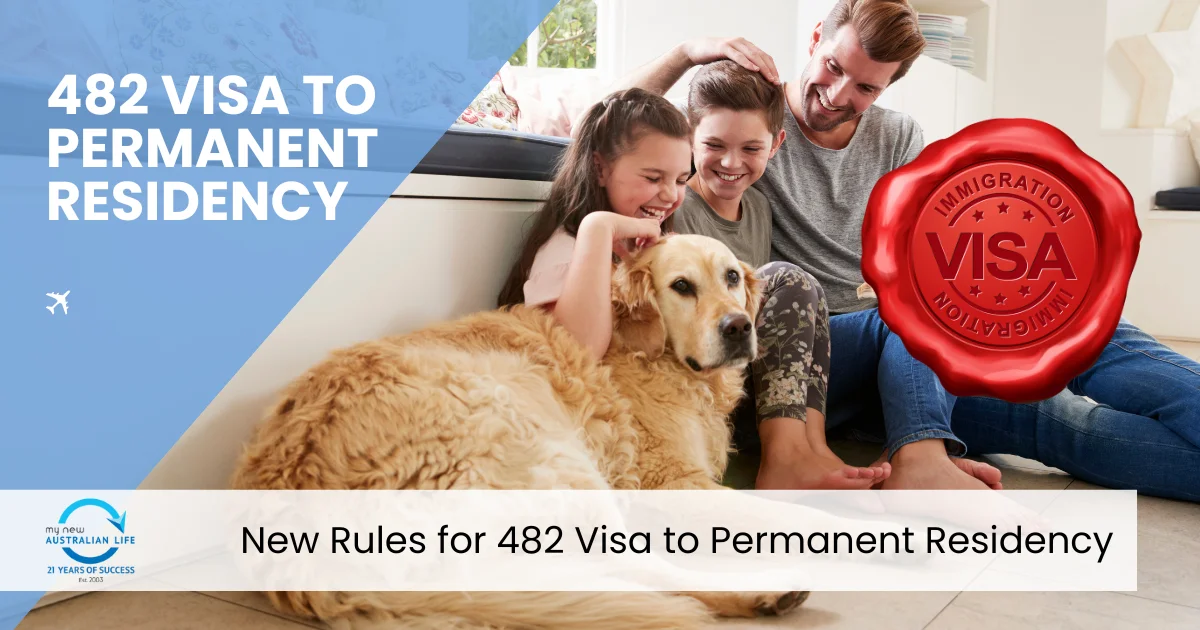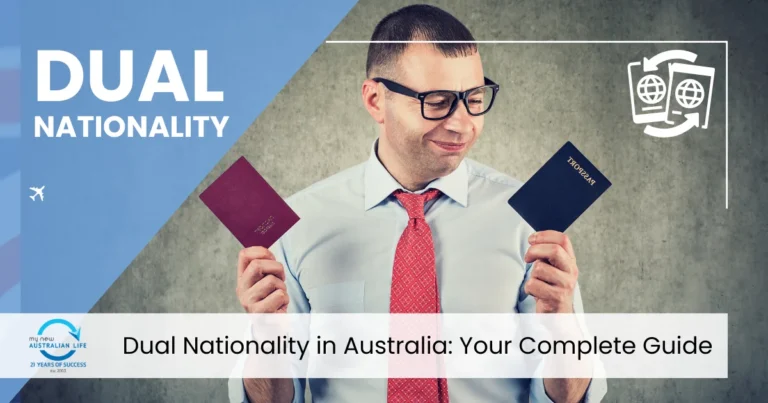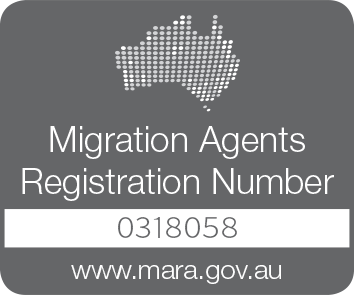Reading Time: 4 minutes
The Temporary Skill Shortage (TSS) subclass 482 visa is a vital tool in Australia’s migration system, designed to address skill shortages by allowing businesses to sponsor skilled workers from overseas. Recent changes implemented on November 25, 2023, have significantly expanded the pathways for 482 visa holders to achieve permanent residency (PR). Let’s delves into these new rules, providing a comprehensive guide for applicants, employers, and migration experts.
Understanding the 482 Visa
The subclass 482 visa enables Australian employers to fill skill gaps by hiring overseas workers. It has three primary streams:- Short-Term Stream: For occupations listed on the Short-Term Skilled Occupation List (STSOL).
- Medium-Term Stream: For occupations on the Medium and Long-Term Strategic Skills List (MLTSSL).
- Labour Agreement Stream: For workers sponsored under a labour agreement.
Recent Changes to 482 Visa Pathways (2023 Updates)
The Australian government’s new policies have simplified and expanded the transition from the 482 visa to permanent residency. Here are the key changes:- Eligibility Across All Streams Previously, only Medium-Term stream visa holders could transition to PR via the Employer Nomination Scheme (ENS) subclass 186 visa. Now, this pathway is open to all 482 visa holders, including those in the Short-Term and Labour Agreement streams.
- Reduced Work Experience Requirements The work experience requirement for PR eligibility has been reduced from three years to two years with the sponsoring employer, expediting the transition process.
- Occupation List Flexibility The new rules remove the restriction that the nominated occupation must be on a specific skilled occupation list. Instead, the occupation must align with the same four-digit ANZSCO unit group code as the one held on the 482 visa.
- Unlimited Onshore Applications The cap on the number of onshore applications for Short-Term stream 482 visas has been removed, allowing visa holders to extend their stay and pursue PR without limitation.
- Age Exemptions Adjusted Age exemptions have been updated, particularly for high-income earners and regional medical practitioners, reducing the required period to qualify for an exemption from three years to two years.
How to Transition from a 482 Visa to Permanent Residency
1. Employer Nomination Scheme (ENS) Subclass 186 Visa
The most common pathway to PR for 482 visa holders is through the ENS 186 visa, which has two streams:- Temporary Residence Transition (TRT) Stream: For 482 visa holders who have worked for the same employer for two years.
- Direct Entry Stream: For skilled workers who meet the eligibility criteria without needing to hold a 482 visa.
2. Labour Market Testing and Nomination Approval
Employers must demonstrate that they conducted labour market testing and were unable to find suitable Australian workers for the role. This step is crucial for securing nomination approval.3. Document Checklist for 482 to PR Transition
- Proof of employment with the sponsoring employer.
- Evidence of meeting English language requirements.
- Health and character assessments.
- Supporting documents for nomination and visa applications.
Eligibility Criteria for Permanent Residency
To transition from a 482 visa to PR, applicants must meet several criteria:- Age: Generally under 45 years (age exemptions apply in certain cases).
- English Proficiency: Proof of adequate English skills (e.g., IELTS or equivalent).
- Work Experience: Two years of full-time work with the sponsoring employer.
- Health and Character Checks: Meeting Australian standards for health and good character.
Benefits of the New Rules
- For Visa Holders:
- Faster and more accessible pathways to PR.
- Improved job security and long-term planning options.
- For Employers:
- Enhanced ability to retain skilled workers.
- Simplified nomination processes.
- For Australia’s Economy:
- Addressing skill shortages.
- Supporting regional development through skilled migration.
Challenges and Considerations
While the new rules are beneficial, applicants and employers must be mindful of:- Application Backlogs: Potential delays due to increased demand.
- Compliance Requirements: Ensuring all legal obligations are met.
- Costs: Application fees and associated costs for health and character checks.
Impact on Skilled Migrants
1. Real-Life Stories
Many skilled workers have already benefited from these changes. For instance, Sarah, a nurse from the UK, transitioned to PR within two years under the new rules, providing her family with greater stability.2. Regional Benefits
The new rules particularly benefit regional areas, where labor shortages are more pronounced. Regional employers can now attract and retain talent more effectively.Comparison of 482 Visa with Other Skilled Migration Visas
- 482 Visa vs. Subclass 189 Skilled Independent Visa:
- The 482 visa requires employer sponsorship, while the 189 visa does not.
- The 482 visa offers quicker entry into the workforce, but the 189 visa provides greater flexibility for PR.
- 482 Visa vs. Subclass 190 Skilled Nominated Visa:
- The 190 visa requires state or territory nomination.
- Both visas offer pathways to PR but differ in nomination and sponsorship requirements.
Expert Tips for a Successful Application
- Start gathering documentation early.
- Maintain a good relationship with your employer.
- Seek advice from registered migration agents to avoid common pitfalls.
FAQs about the New 482 Visa Rules
- Can I apply for PR directly after two years on a 482 visa? Yes, provided you meet the eligibility criteria.
- What happens if I switch employers during my 482 visa period? You may need a new nomination and should consult with a migration agent.
- Are there exceptions to the age limit for PR? Yes, for high-income earners and regional medical practitioners.






